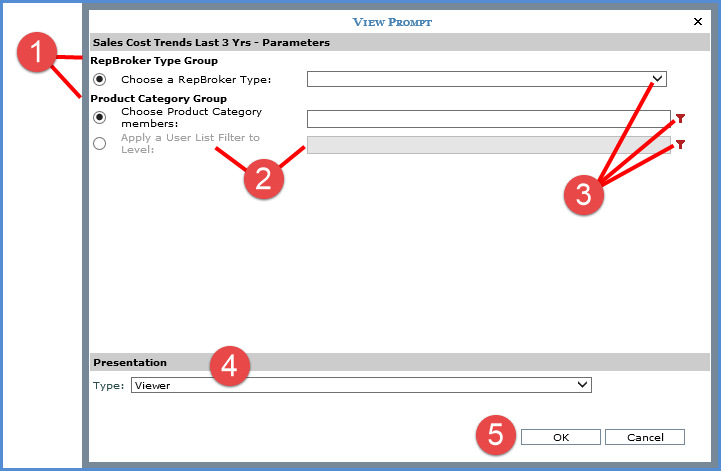

|
Parameter Groups - You can distinguish each parameter group that exists for a view by the bold name above each group. In this example, there is a group named "RepBroker Type Group" for the RepBroker Type level, and a group named "Product Category Group" for the Product Category level. Each group has its own set of parameters and one parameter per group can be used to filter its respective level in the view. |
|
Individual Parameters - Parameters in each group have their own radio buttons. Select one to activate that parameter and then specify a value for it (see 3 below). If a default value is associated with a parameter, the value will display in the field next to the parameter. You can leave a parameter set to the default or choose a different value. |
|
Specifying Parameter Values - Select a parameter's radio button then use the control provided to specify values. The View Prompt window will default to the last selected filter selections each time you reopen the window. Running the view from the left panel resets the window to its default values.
See also Working with Parameters. |
|
Presentation – This section only displays if you selected the Yes option for the Presentation section's Prompt property. Users can choose to run the view in Viewer (grid) format or as an MS Excel file. If they aren’t any parameters defined for the view and Prompt is set to Yes, then the Presentation section will be the only thing that displays in the View Prompt window. |
|
OK and Cancel -
|